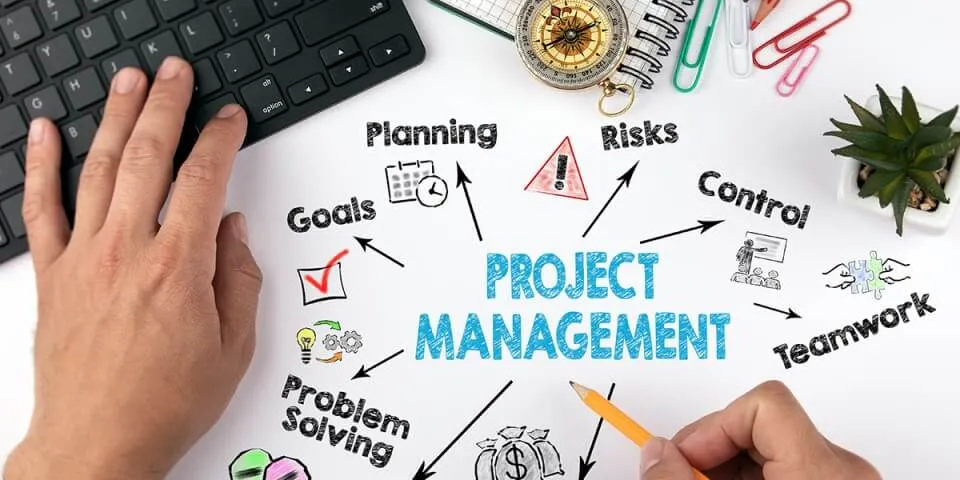Agile vs Traditional Project Management
In the ever-evolving landscape of project management, two distinct methodologies have gained prominence – Agile and Traditional Project Management. As organizations strive for efficiency, adaptability, and successful project outcomes, the choice between these two approaches becomes paramount. In this comprehensive guide, we will delve deep into the realm of Agile vs Traditional Project Management, unraveling their intricacies, highlighting the key differences, and providing invaluable insights to assist you in making informed decisions.
Agile project management is a modern, flexible approach that emphasizes collaboration, adaptability, and customer satisfaction. It stands in stark contrast to the rigid structures of traditional project management.
Agile Principles
Agile is guided by 12 key principles that emphasize customer collaboration, iterative development, and responsiveness to change.
- Customer satisfaction through continuous delivery.
- Welcome changing requirements, even late in development.
- Frequent delivery of working software.
- Collaboration between stakeholders and developers.
- Building projects around motivated individuals.
- Face-to-face communication.
- Working software as the primary measure of progress.
- Sustainable development pace.
- Attention to technical excellence and good design.
- Simplicity – the art of maximizing the amount of work not done.
- Self-organizing teams.
- Regular reflection and adaptation.
Exploring Traditional Project Management
Traditional Project Management, often referred to as Waterfall, follows a linear and sequential approach. It is characterized by well-defined phases and strict documentation.
Key Characteristics
Traditional Project Management is known for its adherence to the following characteristics:
- Sequential phases: Projects progress through distinct stages like initiation, planning, execution, monitoring, and closure.
- Comprehensive planning: Extensive planning is done upfront, with little room for changes once the project starts.
- Documentation: Emphasis on thorough documentation and formalized processes.
- Quality control: Rigorous quality control measures are implemented throughout the project.
Agile vs Traditional Project Management: A Comparative Analysis
Decision Criteria
When choosing between Agile and Traditional Project Management, several factors come into play. Let’s break them down:
- Project Complexity: Agile is well-suited for complex projects with evolving requirements, while Traditional Management works best for well-defined, straightforward projects.
- Flexibility: Agile offers flexibility, allowing for changes mid-project, whereas Traditional Management requires strict adherence to the initial plan.
- Client Involvement: Agile encourages continuous client feedback and collaboration, whereas Traditional Management may limit client involvement to specific project phases.
- Risk Tolerance: Agile can be riskier due to its adaptive nature, while Traditional Management provides a structured risk management approach.
- Timeline: Agile projects often have shorter delivery times due to incremental development, while Traditional projects follow a linear timeline.
- Budget: Agile can be cost-effective in the long run, but Traditional Management may provide more accurate cost estimates upfront.
- Team Autonomy: Agile empowers self-organizing teams, while Traditional Management relies on a hierarchical structure.
- Documentation: Traditional Management requires extensive documentation, while Agile focuses on working software over documentation.
Real-World Insights
To better understand the practical implications, let’s explore some real-world experiences:
- John’s Software Startup: John, the founder of a tech startup, opted for Agile for its software development projects. The ability to pivot quickly based on user feedback allowed his company to stay competitive in a fast-paced market.
- Mary’s Construction Company: Mary, a project manager in the construction industry, found success with Traditional Management. Her projects, with clearly defined plans, rarely required changes once initiated, ensuring predictable outcomes.
Frequently Asked Questions
Is Agile always the best choice?
Agile is effective for many projects, but it’s not a one-size-fits-all solution. Consider the project’s nature and requirements before choosing Agile or Traditional Management.
What are the major drawbacks of Agile?
Agile’s adaptability can lead to scope creep if not managed carefully. Additionally, some organizations may struggle with the cultural shift required for Agile.
Can I combine elements of both methodologies?
Yes, organizations often use a hybrid approach, combining Agile and Traditional elements to suit their specific needs.
Is Agile suitable for large-scale projects?
Agile can be adapted for large projects through frameworks like SAFe (Scaled Agile Framework) to ensure coordination and scalability.
How does Traditional Project Management handle changes?
In Traditional Management, changes are often costly and require extensive documentation and approval processes.
Which approach is more cost-effective in the long run?
Agile’s adaptability can lead to better cost control over time, but Traditional Management may offer more accurate initial cost estimates.
Conclusion
In the dynamic world of project management, choosing between Agile and Traditional approaches is not a matter of one being universally superior to the other. It hinges on the specific requirements, project scope, and organizational culture. Agile’s adaptability suits rapidly changing environments, while Traditional Management provides predictability and structure. By understanding the nuances of both methodologies, you can make informed decisions that lead to successful project outcomes.
READ MORE: HIRE REACT DEVELOPER





